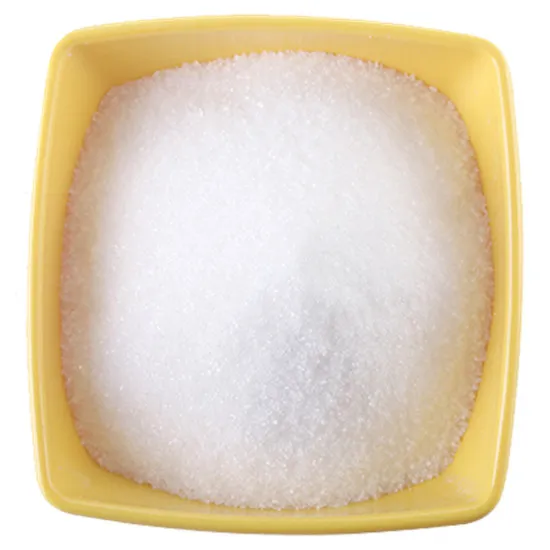The Science Behind Fructose: Metabolism, Benefits, and Risks
2024-08-20
Introduction
Fructose is a naturally occurring sugar found in fruits, vegetables, and honey. While it is often overshadowed by other sugars like glucose and sucrose, fructose plays a unique role in human metabolism. However, with the rise of processed foods and sweetened beverages, fructose consumption has soared, leading to concerns about its health implications. In this blog, we’ll delve into the science behind fructose, exploring how it is metabolized, its benefits, and the potential risks associated with high intake.
1. Fructose Metabolism: A Unique Pathway
Fructose is absorbed in the small intestine and then transported to the liver, where it is metabolized. Unlike glucose, which is used by nearly all cells in the body for energy, fructose is primarily processed by the liver. In the liver, fructose is converted into glucose, glycogen (stored glucose), lactate, and fat. This unique metabolic pathway allows fructose to bypass the regulatory steps that control glucose metabolism, leading to a more rapid and less controlled conversion into fat.

This difference in metabolism is one reason why high fructose consumption is linked to an increase in fat production in the liver, potentially leading to non-alcoholic fatty liver disease (NAFLD) and contributing to other metabolic disorders.
2. The Benefits of Natural Fructose
When consumed as part of whole foods, such as fruits and vegetables, fructose offers several benefits. Fruits and vegetables provide not only fructose but also fiber, vitamins, minerals, and antioxidants, all of which are essential for maintaining good health. The fiber in these foods slows down the absorption of fructose, preventing spikes in blood sugar and reducing the risk of metabolic issues.
For example, fruits like berries, apples, and citrus are rich in both fructose and dietary fiber, making them a healthy choice for most people. The antioxidants present in fruits and vegetables help combat oxidative stress, which is linked to chronic diseases such as cancer and heart disease. Moreover, the vitamins and minerals found in these foods support various bodily functions, including immune health, bone strength, and skin health.
3. The Risks of Excessive Fructose Intake
While fructose in whole foods is generally considered healthy, excessive intake of fructose from added sugars in processed foods poses significant risks. The widespread use of high-fructose corn syrup (HFCS) in the food industry has led to a dramatic increase in fructose consumption, particularly in Western diets.
High fructose intake is associated with several health problems, including obesity, insulin resistance, and type 2 diabetes. The rapid conversion of fructose to fat in the liver can lead to an accumulation of fat, contributing to NAFLD. This condition is increasingly common, particularly in individuals with high-sugar diets, and can progress to more severe liver diseases if not addressed.
Moreover, high fructose consumption has been linked to increased levels of uric acid in the blood, which can lead to gout, a form of inflammatory arthritis. The overconsumption of fructose has also been associated with higher levels of triglycerides, a type of fat in the blood that increases the risk of heart disease.
4. Fructose and Satiety: A Double-Edged Sword
One of the unique aspects of fructose is its impact on satiety, or the feeling of fullness after eating. Unlike glucose, fructose does not stimulate the release of insulin to the same extent, nor does it significantly impact the hormones that regulate hunger, such as leptin. This means that foods high in fructose may not make you feel as full as foods high in other types of sugar, potentially leading to overeating.
This lack of satiety response can be problematic, particularly in the context of sugary drinks and processed foods, where large amounts of fructose can be consumed without providing a feeling of fullness. This can contribute to excessive calorie intake and weight gain over time.
5. Managing Fructose Intake for Better Health
Given the potential risks associated with high fructose consumption, it’s important to manage intake, particularly from processed foods and sweetened beverages. Here are some strategies to help control fructose consumption:
- Choose Whole Foods: Opt for whole fruits and vegetables instead of processed snacks and desserts. The fiber in whole foods helps slow down fructose absorption and promotes satiety.
- Read Labels: Be aware of added sugars in processed foods, particularly those containing high-fructose corn syrup. Reading food labels can help you make informed choices.
- Limit Sugary Beverages: Reduce or eliminate sugary drinks like sodas, fruit juices, and energy drinks, which are often high in fructose.
- Moderation is Key: While fructose is naturally present in many healthy foods, it’s important to consume it in moderation, especially when it comes to added sugars.
Conclusion
Fructose is a natural sugar with a unique metabolic pathway that plays a significant role in the human diet. While it provides benefits when consumed as part of whole foods, excessive intake of fructose from processed foods and sweetened beverages can pose serious health risks. By understanding the science behind fructose and making informed dietary choices, individuals can enjoy the benefits of natural fructose while minimizing the risks associated with overconsumption. Balancing fructose intake is essential for maintaining good health and preventing metabolic disorders.


